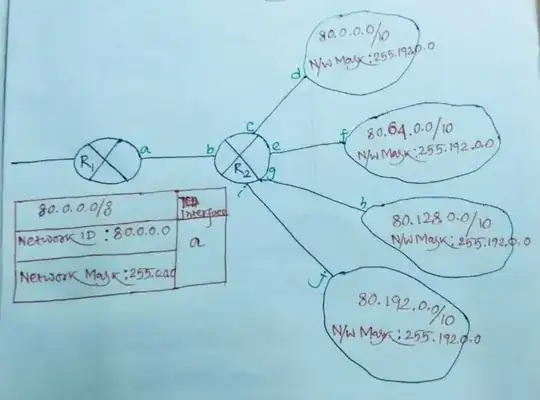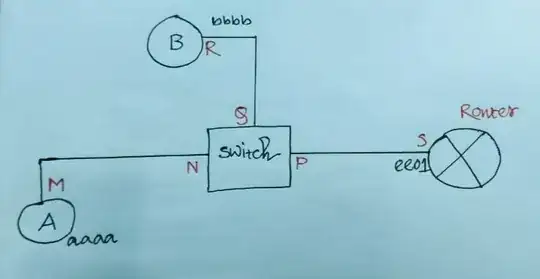Scenario:1
Suppose external Router R1 has interface a connected with interface b of the site Router R2. And Router R1 using IP address 80.0.0.0/8 for a. Router R2 has 4 subnets 80.0.0.0/10, 80.64.0.0/10, 80.128.0.0/10, 80.192.0.0/10.
 My first question is router R1 with interface a and router R2 interface b has same ip address 80.0.0.0/8 or interface a using 80.0.0.0/8 and interface b using 80.0.0.0/10?
My first question is router R1 with interface a and router R2 interface b has same ip address 80.0.0.0/8 or interface a using 80.0.0.0/8 and interface b using 80.0.0.0/10?
My second question is router R2's interface c has ip address 80.0.0.0/10?or any of the IP address of the block 80.0.0.0/10 for example 80.0.0.1/10?
Scenario:2
Suppose a host A, host B, router connected to 3 different ports of switch.Suppose host A has interface M and Mac address aaaa connected to switch port of N.

My question is switch port interface N and host interface M could share same Mac address or switch has 3 different Mac address for it's interface N, P, Q?